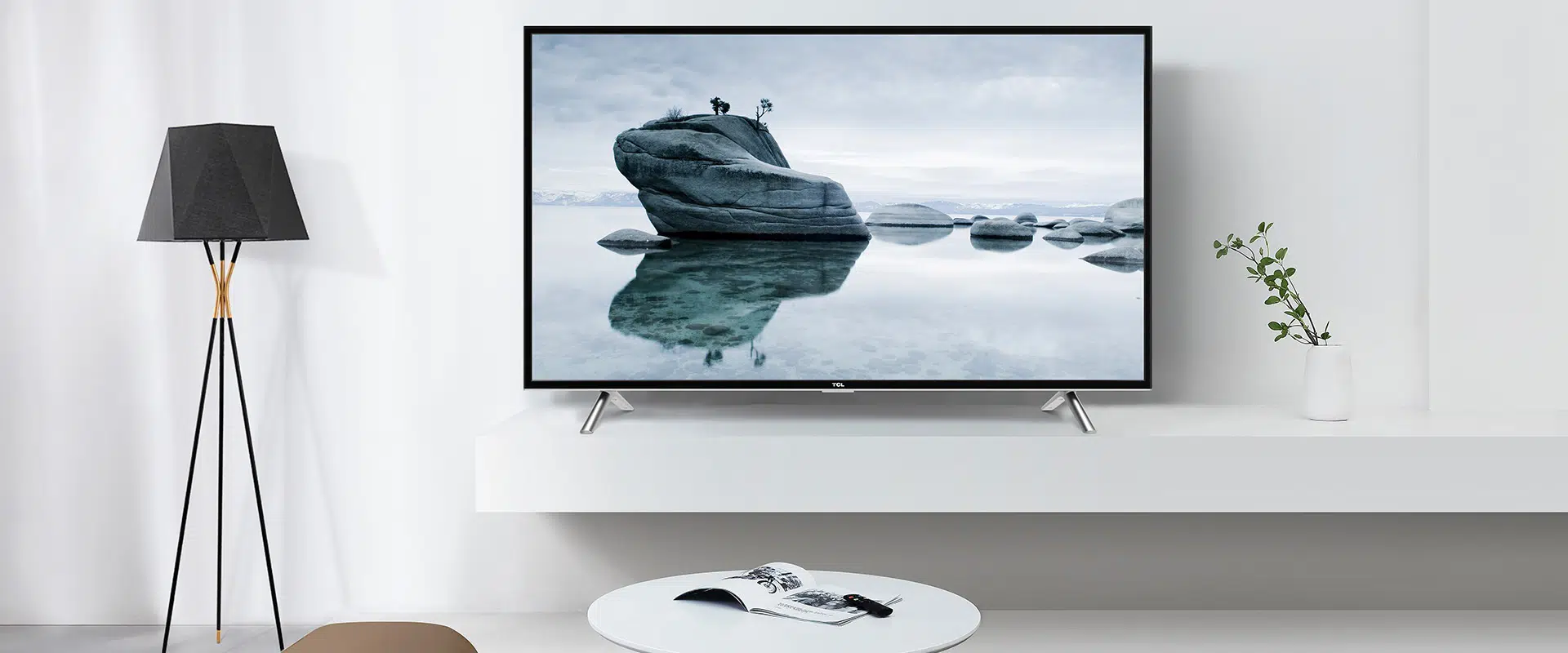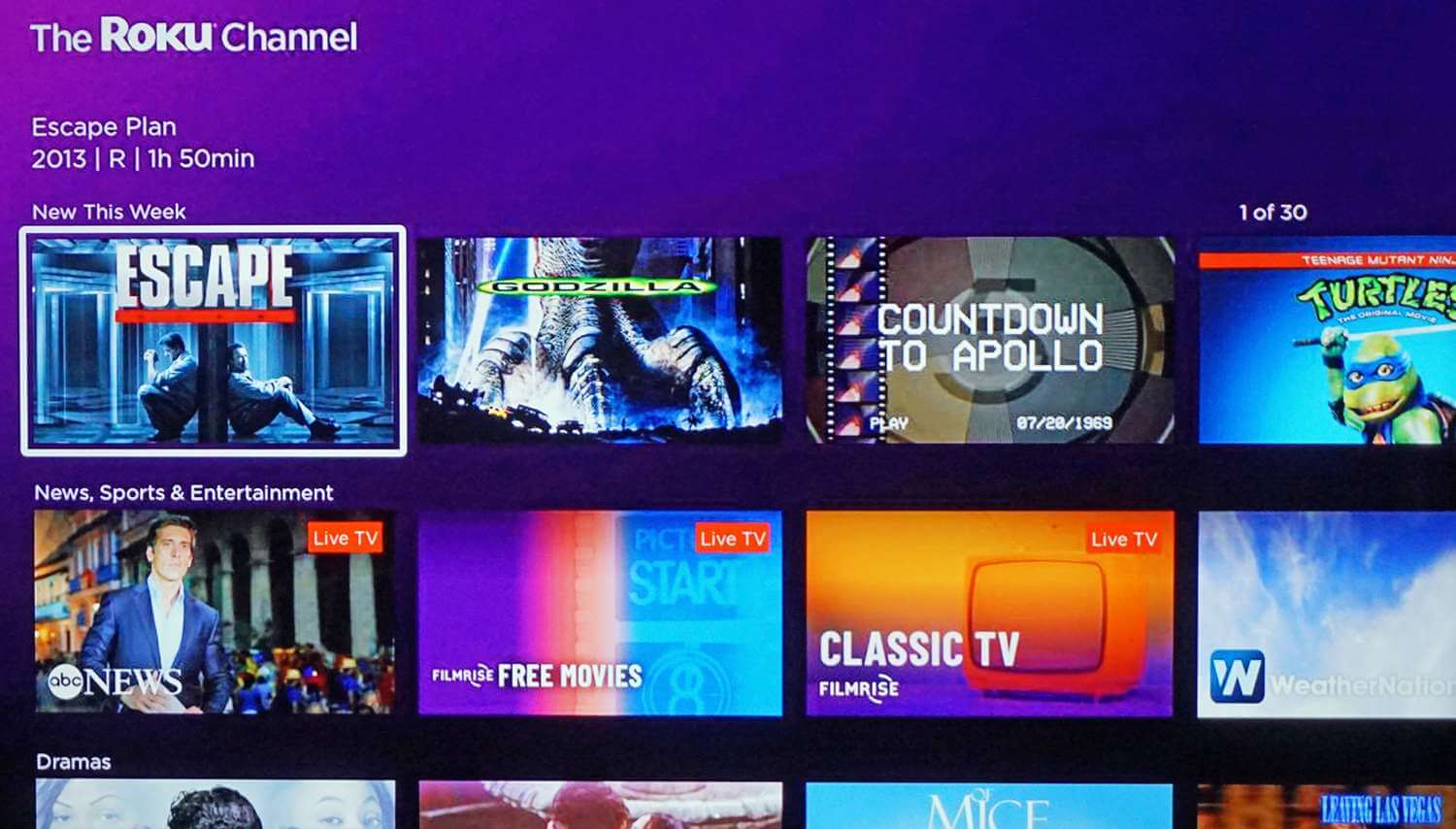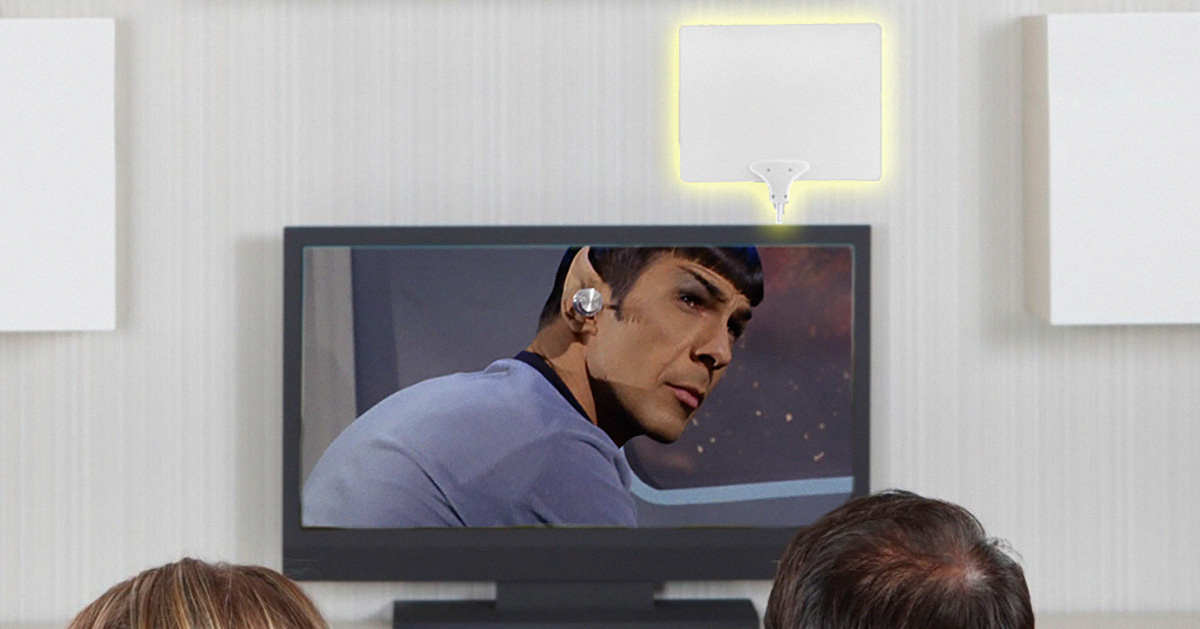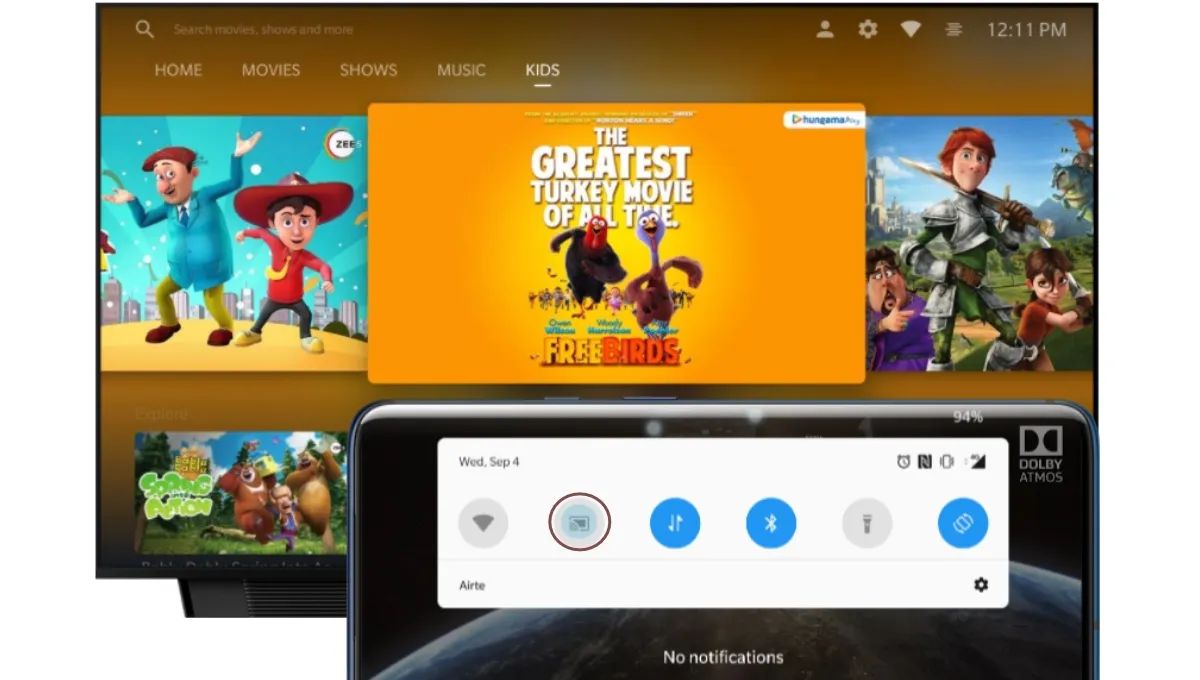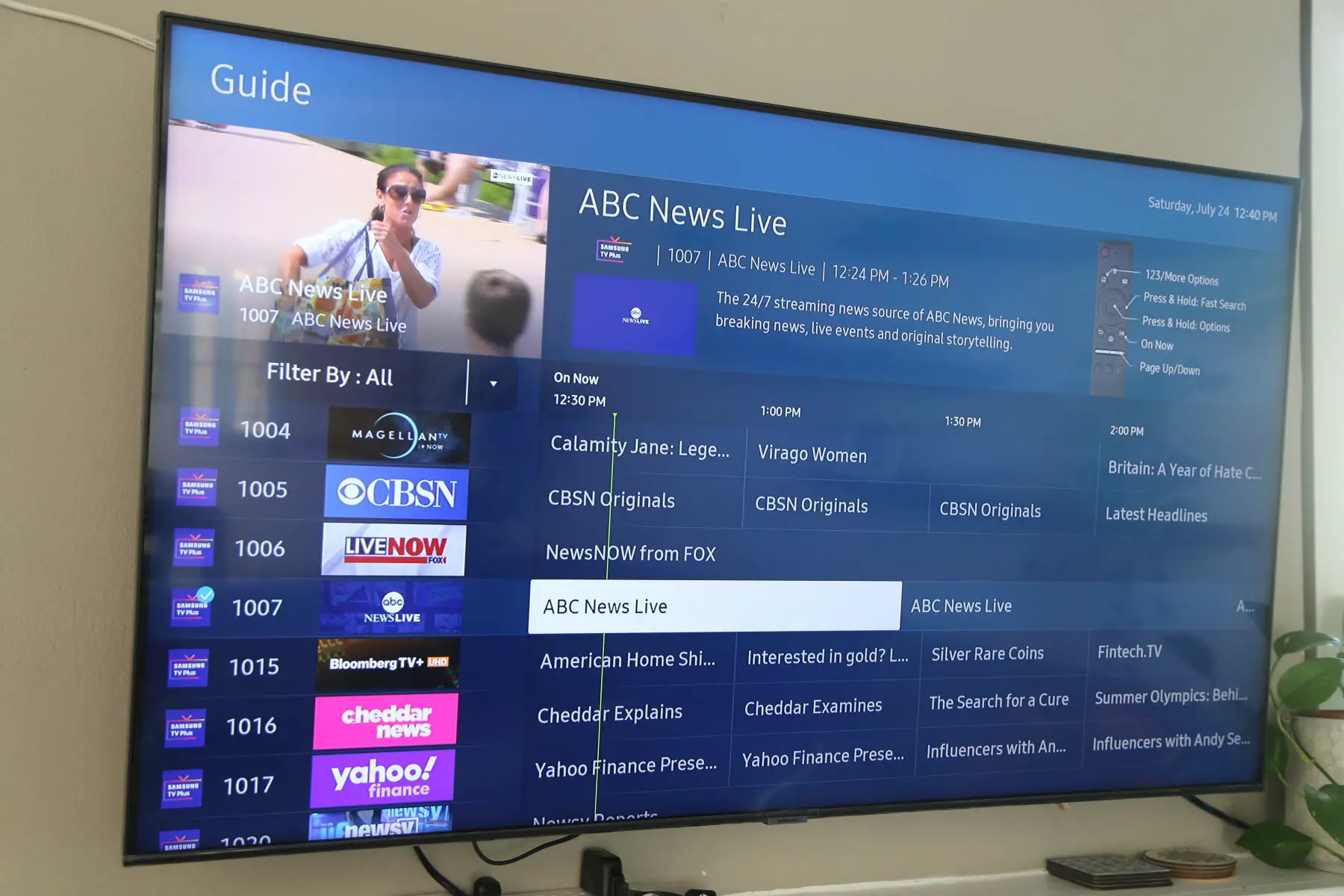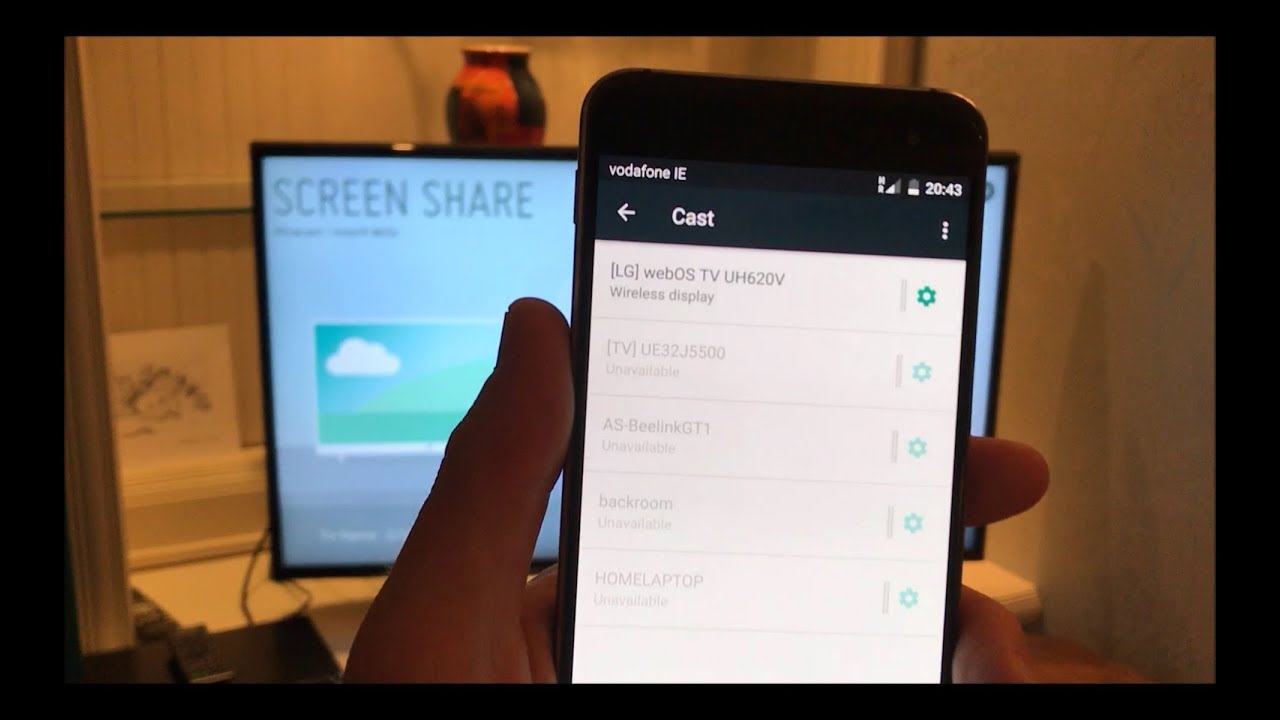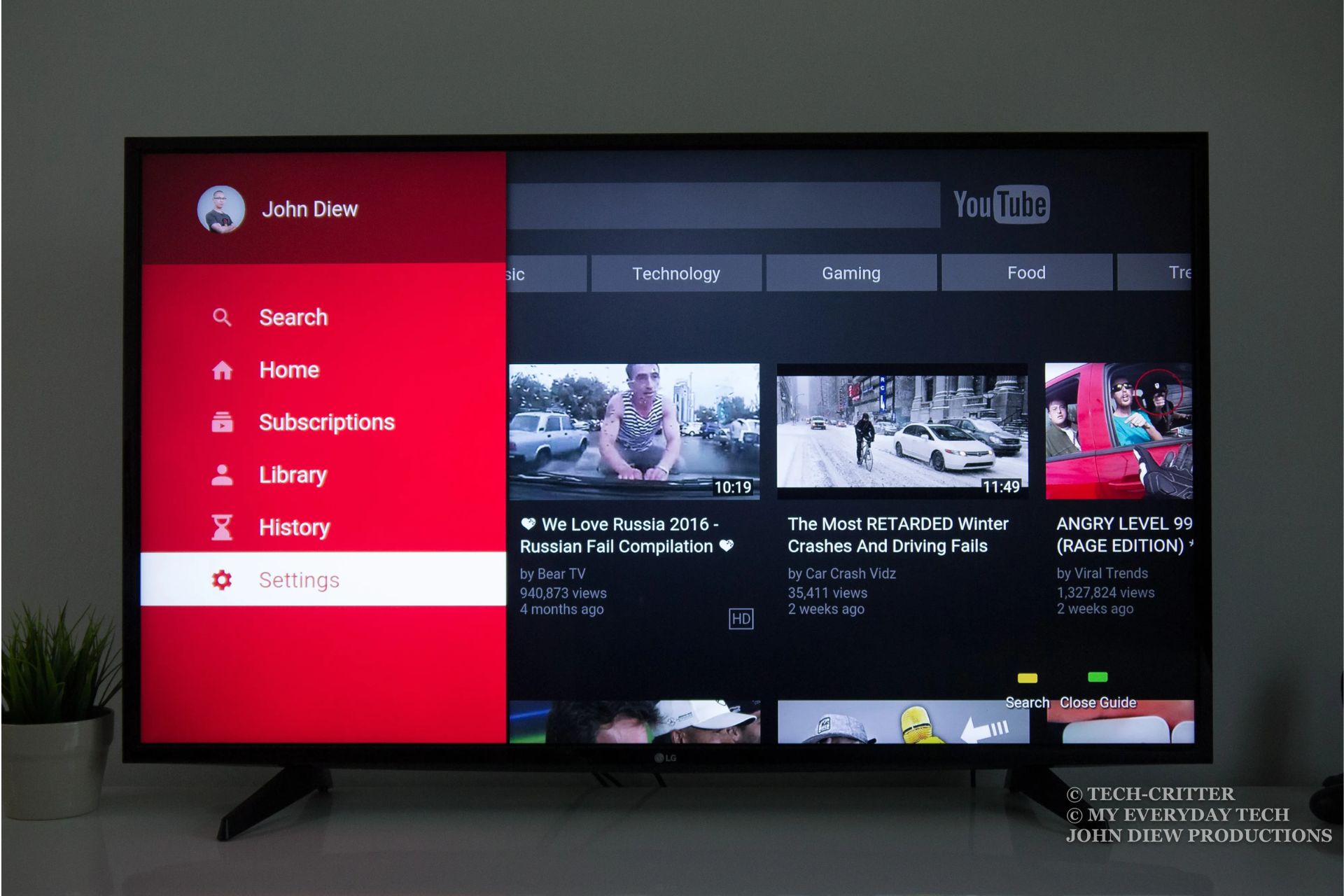Introduction
Welcome to the world of smart TVs! Gone are the days of simply watching cable or satellite channels on your television. With the advent of smart TVs, you now have access to a plethora of entertainment options right at your fingertips. From streaming your favorite movies and TV shows to browsing the web and even controlling your smart home devices, a smart TV opens up a whole new world of possibilities.
But what exactly is a smart TV? In simple terms, it’s a television set that is equipped with internet connectivity and has built-in applications and features that allow you to access a wide range of online content. Whether you’re a tech-savvy individual or a newbie to the world of smart TVs, this guide will walk you through the basics and help you make the most of your device.
Before we dive into the specifics, it’s important to note that setting up and using a smart TV requires an internet connection. Whether you have a wired connection or use Wi-Fi, make sure your TV is connected to the internet before proceeding. Additionally, each smart TV brand and model may have slightly different features and functionalities, so be sure to consult your device’s user manual for any brand-specific instructions.
In this guide, we’ll cover the essentials of using a smart TV, including connecting it to the internet, setting up accounts and profiles, navigating the user interface, accessing streaming services and apps, mirroring and screen sharing, controlling the TV with voice commands and remote control apps, adjusting picture and sound settings, and troubleshooting common issues.
So, whether you’re looking to enhance your binge-watching experience, explore new entertainment options, or simply make the most of your smart TV’s capabilities, let’s dive in and discover how to get the most out of your device!
What is a smart TV?
A smart TV is a television set that combines traditional TV functionality with internet connectivity and built-in applications. Unlike conventional TVs, which rely on external devices like cable boxes or DVD players, smart TVs have the ability to access online content directly through their interface.
At its core, a smart TV is essentially a computer built into a television set. It is equipped with a range of features and services that enhance your viewing experience and open up a world of entertainment possibilities. With internet connectivity, you can access popular streaming services like Netflix, Hulu, and Amazon Prime Video, allowing you to stream your favorite movies, TV shows, and documentaries on-demand.
In addition to streaming services, smart TVs also offer a wide range of applications and widgets that cater to different interests and needs. From social media apps like Facebook and Instagram to news apps, gaming platforms, and music streaming services, there’s something for everyone. This means you can catch up on the latest news, engage with friends on social media, or enjoy your favorite tunes without having to switch devices.
One of the key advantages of smart TVs is their ability to browse the internet. With a built-in web browser, you can surf the web right from your television screen. Whether you want to read articles, watch videos, or shop online, the possibilities are endless. Some smart TVs even support voice search, allowing you to search for content using just your voice, making the browsing experience even more convenient.
Another notable feature of smart TVs is their compatibility with smart home devices. Many smart TVs can be connected to devices like smart speakers, thermostats, and security cameras, allowing you to control them directly from your television. This integration enables you to create a unified smart home ecosystem, where you can manage various devices from a single interface.
It’s important to note that not all smart TVs are created equal. Different brands and models may have varying features, user interfaces, and app availability. When shopping for a smart TV, it’s essential to research and compare the specifications and capabilities to ensure it meets your requirements.
In summary, a smart TV is a multimedia device that brings the world of online content and connectivity to your television screen. With the ability to stream movies, access apps, browse the internet, and control smart home devices, it offers a versatile and immersive viewing experience.
Connecting your smart TV to the internet
Before you can start exploring the world of online content on your smart TV, you need to connect it to the internet. There are a few different methods you can use, depending on your setup and preferences.
1. Wired Connection: The most straightforward way to connect your smart TV to the internet is through a wired connection. Many smart TVs have an Ethernet port, allowing you to directly connect an Ethernet cable from your internet router to the TV. This method provides a stable and reliable connection, making it ideal if your TV is located near your router.
2. Wi-Fi Connection: If a wired connection is not feasible or convenient, you can connect your smart TV to the internet wirelessly using Wi-Fi. Most smart TVs have built-in Wi-Fi capability, allowing them to connect to your home Wi-Fi network. To set up a Wi-Fi connection, navigate to the network settings on your TV, select your Wi-Fi network, and enter the password if required.
3. Mobile Hotspot: If you don’t have access to a wired connection or Wi-Fi, another option is to use your smartphone’s mobile hotspot feature. This allows your smart TV to connect to the internet through your phone’s cellular data. Keep in mind that this method relies on your phone’s data plan and may incur additional charges if you exceed your data limits.
Once you have established a connection, it’s important to ensure a stable and reliable internet connection. This will ensure smooth streaming and prevent buffering issues. If you experience connectivity problems, you can try the following troubleshooting steps:
– Check your internet connection: Ensure that your internet router is working properly and that other devices in your home can connect to the internet without issues.
– Move closer to the router: If your smart TV is located far from your router, the Wi-Fi signal may weaken, leading to a poor connection. Try moving the TV closer to the router to improve the signal strength.
– Reset the network settings: If all else fails, you can try resetting the network settings on your smart TV. This will remove any saved Wi-Fi networks and give you the opportunity to set up the connection from scratch.
– Consult the user manual: If you’re still having trouble connecting your smart TV to the internet, consult the user manual that came with your device. It may provide specific instructions or troubleshooting tips for your particular model.
Once your smart TV is successfully connected to the internet, you’ll be ready to explore the wide range of online content, streaming services, and applications available right from the comfort of your living room.
Setting up accounts and profiles
After connecting your smart TV to the internet, the next step is to set up accounts and profiles to personalize your viewing experience. This allows you to access streaming services, save preferences, and customize your content recommendations. Here are some essential steps to get started:
1. Create a Smart TV Account: Many smart TVs require you to create an account specific to the manufacturer or platform. This account allows you to download apps, sync preferences across devices, and access additional features. Check your TV’s settings or user manual to find instructions on creating an account.
2. Sign Up for Streaming Services: To enjoy a variety of movies, TV shows, and other content, you’ll need to sign up for popular streaming services such as Netflix, Hulu, Amazon Prime Video, or Disney+. Depending on the service, you may need to provide payment information and select a subscription plan. Some smart TVs come pre-installed with these apps, while others require you to download them from an app store.
3. Set Up User Profiles: If you’re sharing the smart TV with others in your household, it’s a good idea to set up individual user profiles. This allows each person to have their own personalized recommendations, watch history, and preferences. Most streaming services have the option to create multiple profiles within a single account.
4. Link Accounts: If you already have existing accounts with streaming services, you can link them to your smart TV. This enables you to easily access your favorite content without having to sign in separately for each service. Look for the option to link accounts in the settings of your streaming apps or consult the user manual for instructions.
5. Customize Settings and Preferences: Take some time to explore the settings on your smart TV and customize them to your liking. You can adjust picture and sound settings, change the language, set parental controls, and more. Each smart TV may have slightly different settings, so refer to the user manual for specific instructions.
Remember to keep your account information secure by using strong, unique passwords and enabling two-factor authentication whenever possible. This helps protect your personal information and prevents unauthorized access to your accounts.
By setting up accounts and profiles on your smart TV, you can unlock a personalized viewing experience tailored to your preferences. Whether you’re binge-watching your favorite shows or discovering new content, having individual profiles and easy access to streaming services enhances your overall entertainment experience.
Navigating the smart TV interface
Once you have your smart TV connected to the internet and accounts set up, it’s time to familiarize yourself with the smart TV interface. Navigating the interface effectively allows you to access apps, switch between different features, and discover new content seamlessly. Here are some essential tips to help you navigate:
1. Home Screen: The home screen is the central hub of your smart TV interface. It is usually the first screen you see when you turn on your TV. Here, you’ll find shortcuts to your most frequently used apps, recommended content, and various settings. Take some time to explore the home screen and customize it to your liking. Many smart TVs allow you to rearrange app icons or pin your favorite apps for quick access.
2. Menu and Settings: To access additional settings and features, look for the menu or settings button on your remote control. This will bring up a menu that allows you to adjust picture and sound settings, manage connected devices, update software, and more. Familiarize yourself with the options available in the menu for a more personalized viewing experience.
3. App Store: Smart TVs often come with their own app stores, where you can explore and download additional applications. Look for the app store icon on your smart TV’s home screen or in the menu. From there, you can browse different categories, search for specific apps, and read reviews. Downloading and installing apps can expand the range of content and functionality available on your smart TV.
4. Remote Control: The remote control is your primary tool for navigating the smart TV interface. Familiarize yourself with its buttons and functionality. Most smart TV remotes have dedicated buttons for quick access to popular features like volume controls, mute, home, and back. Some remotes even have built-in voice control or a touchpad for easier navigation. Refer to the user manual for specific instructions on using your remote control.
5. Smart Assistant Integration: Many smart TVs now come with voice control functionality, allowing you to navigate the interface, search for content, and control your TV using voice commands. If your TV supports this feature, activate it to enjoy a hands-free experience. Simply speak commands into the remote control’s microphone or use a compatible smart speaker to control your TV with your voice.
6. Shortcuts and Quick Actions: Depending on your smart TV’s interface, there may be shortcuts or quick actions available. These allow you to perform certain tasks or access specific features with a single button press. For example, you may have a button that takes you directly to the app store or one that launches a popular streaming service. Take advantage of these shortcuts to streamline your navigation and quickly access your preferred content.
Remember that each smart TV may have a slightly different interface and navigation method. The above tips provide a general overview, but it’s always a good idea to refer to your TV’s user manual for specific instructions and guidance.
By mastering the navigation of your smart TV interface, you can effortlessly explore content, switch between apps, and customize your viewing experience with ease.
Accessing streaming services and apps
One of the key advantages of owning a smart TV is the ability to access a wide range of streaming services and apps. From popular streaming platforms to specialized apps for news, sports, and gaming, a smart TV opens up a world of entertainment options right from your living room. Here’s how you can access streaming services and apps on your smart TV:
1. Home Screen: The home screen of your smart TV is the central hub for accessing apps and streaming services. By default, you’ll find shortcuts to popular apps and recommendations based on your viewing history. Use your remote control to navigate through the apps and select the one you want to use. Simply click on the app icon to launch it and start enjoying your favorite content.
2. App Store: Many smart TVs come with their own app store or app marketplace, where you can browse and download additional apps. Look for the app store icon on your smart TV’s home screen or in the settings menu. Once you access the app store, you can search for specific apps, browse different categories, and read user reviews. Download the apps you’re interested in, and they will appear on your home screen for easy access.
3. Pre-Installed Apps: Smart TVs often come with popular streaming apps pre-installed. These may include Netflix, Hulu, Amazon Prime Video, YouTube, and more. Simply navigate to your smart TV’s home screen or app list to find these pre-installed apps. In most cases, you’ll just need to select the app icon to launch it and start streaming your desired content.
4. Voice Control: If your smart TV supports voice control, you can use voice commands to access streaming services and apps effortlessly. Activate the voice control feature by pressing the designated button on your remote control or using a compatible smart speaker or virtual assistant. Simply speak the name of the app or service you want to open, and your smart TV will do the rest.
5. Casting and Screen Mirroring: Some smart TVs support casting or screen mirroring, allowing you to stream content from your mobile devices directly onto your TV screen. This is particularly useful for apps or services that may not be available directly on your smart TV. Simply open the app on your smartphone or tablet, look for the casting icon, and select your smart TV to start streaming the content on the big screen.
6. Recommended Content and Personalized Suggestions: Smart TVs often offer personalized recommendations based on your viewing habits and preferences. These recommendations can be found on your home screen or within specific apps. Explore the recommended sections to discover new shows, movies, and content that align with your interests.
Remember, the availability of streaming services and apps may vary depending on your region and the specific make and model of your smart TV. Always check for app compatibility and availability, and keep your apps up to date to enjoy the latest features and improvements.
With easy access to streaming services and apps, your smart TV becomes a hub for all your entertainment needs. Enjoy a vast library of movies, TV shows, live sports, news, and much more, all at the touch of a button.
Mirroring and Screen Sharing from Your Devices
In addition to accessing streaming services and apps directly on your smart TV, many models also offer the capability to mirror or screen share content from your mobile devices. This feature allows you to display the screen of your smartphone, tablet, or computer on the larger screen of your smart TV. Here’s how you can make use of mirroring and screen sharing:
1. Mirroring/Miracast: Mirroring, also known as Miracast, is a wireless display standard that allows you to mirror the screen of your compatible device onto your smart TV. To use this feature, ensure that both your smart TV and device support Miracast. On your device, go to the settings menu and look for the screen mirroring or casting option. Select your smart TV from the available devices, and your device’s screen will be mirrored on the TV.
2. AirPlay (Apple devices): If you own an Apple device, such as an iPhone, iPad, or Mac, you can make use of the AirPlay feature to wirelessly stream content to your smart TV. Ensure that both your Apple device and smart TV are connected to the same Wi-Fi network. On your Apple device, swipe down to access the Control Center and tap the AirPlay icon. Select your smart TV from the list of available devices, and you can start streaming your device’s screen or specific content to the TV.
3. Chromecast/DLNA: If your smart TV supports Chromecast or DLNA (Digital Living Network Alliance), you can cast content from compatible apps on your smartphone or tablet directly to your TV. Look for the casting icon within supported apps, such as YouTube, Netflix, or Spotify, and select your smart TV from the list of available devices. The chosen content will then play on your TV, while your device serves as a remote control.
4. Screen Sharing Apps: Alternatively, you can use screen sharing apps to mirror your device’s screen on your smart TV. There are several apps available for Android, iOS, and Windows devices that facilitate screen sharing, such as Google Home, Samsung Smart View, and Roku App. Download and install the appropriate app on your device, follow the instructions provided, and you’ll be able to mirror your screen easily.
It’s important to note that the specific mirroring and screen sharing capabilities may vary depending on your smart TV brand and model. Refer to your TV’s user manual or manufacturer’s website for detailed instructions on how to enable and use these features.
Mirroring and screen sharing from your devices offer a convenient way to share photos, videos, presentations, and even play games on the big screen. Whether you want to share vacation photos with family, watch a YouTube video with friends, or give a presentation at work, the flexibility of mirroring and screen sharing enhances your multimedia experience.
Controlling your Smart TV with Voice Commands and Remote Control Apps
Gone are the days of searching for the TV remote or navigating through complicated menus to control your smart TV. With advancements in technology, you can now conveniently command your smart TV using voice commands or even control it using your smartphone or tablet. Here are two ways you can control your smart TV:
1. Voice Commands: Many smart TVs come equipped with built-in voice control functionality. This feature allows you to control your TV using simple voice commands. The exact voice control capabilities vary depending on the brand and model of your smart TV, but some common commands include turning the TV on or off, changing channels, adjusting the volume, launching apps, and searching for content. Activate the voice control feature on your smart TV by pressing the designated button on your TV’s remote control or the microphone button on a compatible remote control app. Speak your command clearly, and the TV will respond accordingly.
2. Remote Control Apps: In addition to the physical remote control that comes with your smart TV, you can also use remote control apps on your smartphone or tablet to control your TV. These apps offer a virtual remote control interface that replicates the buttons and functionalities of the physical remote. Most smart TV manufacturers provide their own remote control apps, which you can download from the respective app stores. Once downloaded, ensure that your smartphone or tablet is connected to the same Wi-Fi network as your smart TV. Open the remote control app, and it will automatically detect your TV. You can then use the app to navigate through menus, change channels, adjust volume, and perform other actions, all from the convenience of your mobile device.
The use of voice commands and remote control apps offers a more intuitive and streamlined method of controlling your smart TV. Not only does it eliminate the need for a physical remote, but it also provides additional functionality and convenience. Whether you prefer the ease of voice commands or the convenience of a remote control app, controlling your smart TV has never been easier.
As with any technology, it’s important to familiarize yourself with the specific capabilities and pre-requisites of your smart TV. Consult your TV’s user manual or manufacturer’s website for detailed instructions on enabling and using voice control or remote control apps specific to your smart TV model.
By taking advantage of these modern control methods, you can enhance your smart TV experience and enjoy seamless control over your entertainment system.
Adjusting Picture and Sound Settings
Getting the optimal picture and sound settings on your smart TV is crucial for a satisfying viewing experience. Every individual has different preferences when it comes to how content appears and sounds on the screen. Fortunately, smart TVs offer a range of settings that allow you to customize the picture and sound to your liking. Here’s how you can adjust these settings:
1. Picture Settings: To adjust the picture settings on your smart TV, navigate to the settings menu. Look for options like “Picture,” “Display,” or “Picture Mode.” Within these settings, you’ll find options to modify brightness, contrast, sharpness, color saturation, and other picture attributes. Play around with these settings to find the right balance that suits your preferences. You may also find preset picture modes such as “Cinema,” “Sports,” or “Vivid” which automatically adjust the picture settings for different viewing scenarios.
2. Sound Settings: Similarly, to adjust the sound settings on your smart TV, navigate to the settings menu and look for options like “Sound,” “Audio,” or “Sound Mode.” Within these settings, you’ll find options to adjust volume, bass, treble, and balance. You may also find preset sound modes such as “Music,” “Movie,” or “News” that automatically optimize the sound settings for different types of content. Experiment with these settings to find the sound quality and balance that suits your preferences.
3. Advanced Settings: In addition to the basic picture and sound settings, many smart TVs offer advanced settings that allow for more fine-tuning. These settings may include options such as motion smoothing, color temperature, noise reduction, and more. If you’re comfortable with these advanced settings, you can experiment with them to achieve a more personalized and immersive viewing experience.
4. Expert Calibration: For those who want to take picture and sound customization to the next level, expert calibration may be an option. Expert calibration involves using specialized equipment and software to fine-tune the settings of your TV for optimal performance. This process can be performed by professional technicians, or you can use calibration tools and guides available online if you’re tech-savvy. Keep in mind that expert calibration may require a deeper understanding of TV settings and can be time-consuming.
It’s important to note that the specific picture and sound settings available and their naming may vary depending on the make and model of your smart TV. Consult your TV’s user manual or manufacturer’s website for detailed information on the available settings and their functionalities for your particular TV.
By adjusting the picture and sound settings on your smart TV, you can tailor the viewing experience to your preferences. Whether you prefer a vibrant and colorful picture or a rich and immersive sound, customizing these settings allows you to create your desired atmospheres for different types of content.
Troubleshooting Common Issues
While smart TVs offer a seamless and convenient way to access a wide range of entertainment, you may encounter various issues from time to time. Fortunately, many common issues can be resolved with a few troubleshooting steps. Here are some common smart TV issues and how to troubleshoot them:
1. No Internet Connection: If your smart TV is unable to connect to the internet, double-check your Wi-Fi connection or Ethernet cable. Ensure that your internet router is working properly and that other devices in your home can connect to the internet. Try restarting your router or resetting the network settings on your smart TV. Additionally, ensure that your smart TV’s software is up to date, as outdated software can sometimes lead to connectivity issues.
2. Slow Streaming or Buffering: If you are experiencing slow streaming or buffering while watching content on your smart TV, there are a few things you can do. First, check your internet connection speed to ensure it meets the minimum requirements for streaming. You can perform an internet speed test using a computer or smartphone. If the speed is below the recommended threshold, try moving your router closer to the TV or consider upgrading your internet plan. You can also try clearing cache or cookies in the app you are using, or closing unnecessary apps or devices that may be using up bandwidth.
3. App Freezing or Crashing: If an app on your smart TV freezes or crashes frequently, try force quitting the app and relaunching it. This can be done by going to the app switcher or task manager on your TV and closing the problematic app. If the issue persists, check if there are any available updates for the app and ensure that your smart TV’s software is up to date. If the problem continues, consider deleting and reinstalling the app from the app store.
4. Audio/Video Sync Issues: If you notice that the audio and video on your smart TV are out of sync, there are a few things you can try. First, check the audio settings on your TV and make sure they are properly configured. If you are using external speakers or a soundbar, ensure that they are properly connected and that their audio settings are adjusted accordingly. You can also try restarting your smart TV and the device you are streaming from. If the issue persists, consult your TV’s user manual or contact customer support for further assistance.
5. Remote Control Problems: If you are having trouble with your smart TV’s remote control, start by checking the batteries and ensuring they are properly inserted. Clean the remote control and the remote sensor on the TV to remove any dust or dirt that may be obstructing the signal. If you have a smartphone or tablet, you can also try using a remote control app as an alternative. Additionally, check if there are any obstacles between the remote control and the TV that may be blocking the signal.
6. Power Issues: If your smart TV is not turning on or experiencing power issues, make sure the power cable is securely plugged into both the TV and the power outlet. Ensure that the outlet is functioning properly by trying a different device or plugging the TV into a different outlet. If the issue persists, try performing a power cycle by unplugging the TV from the power source, waiting for a few minutes, and then plugging it back in.
If you encounter persistent issues with your smart TV that cannot be resolved through troubleshooting, consult your TV’s user manual or contact customer support for further assistance. They will be able to provide more specific guidance based on your TV’s make and model.
Troubleshooting common issues is an important skill to have in order to ensure a smooth and uninterrupted viewing experience on your smart TV. By following these troubleshooting steps, you can quickly resolve many issues and get back to enjoying your favorite shows and movies.
Conclusion
Smart TVs have transformed the way we consume entertainment, bringing a world of streaming services, apps, and customization options to our living rooms. By connecting your smart TV to the internet, setting up accounts and profiles, navigating the user interface, accessing streaming services and apps, utilizing mirroring and screen sharing, controlling your TV with voice commands and remote control apps, adjusting picture and sound settings, and troubleshooting common issues, you can fully maximize the potential of your smart TV and create a personalized viewing experience.
With the ability to stream your favorite shows and movies, browse the internet, and control smart home devices, smart TVs provide a versatile and convenient platform for all your entertainment needs. By adjusting picture and sound settings, you can create a customized viewing and listening experience that suits your preferences. Troubleshooting common issues ensures that you can overcome any technical challenges that may arise, allowing you to enjoy uninterrupted entertainment.
As technology continues to advance, smart TVs will likely offer even more features and capabilities in the future. It’s important to stay informed about software updates, new apps, and emerging technologies to make the most of your smart TV. Regularly check for firmware updates and explore the app store for new content and services.
Remember to consult your smart TV’s user manual or manufacturer’s website for model-specific instructions and guidelines. Each smart TV has its nuances, features, and limitations, and it’s important to refer to the relevant documentation for accurate information. Additionally, reach out to customer support if you encounter any persistent issues or have specific questions about your smart TV.
Embrace the possibilities of your smart TV and enjoy a vast world of entertainment, convenience, and customization. Whether you’re binge-watching your favorite shows, exploring new apps, or controlling your TV with voice commands, your smart TV offers endless opportunities for enjoyment.







